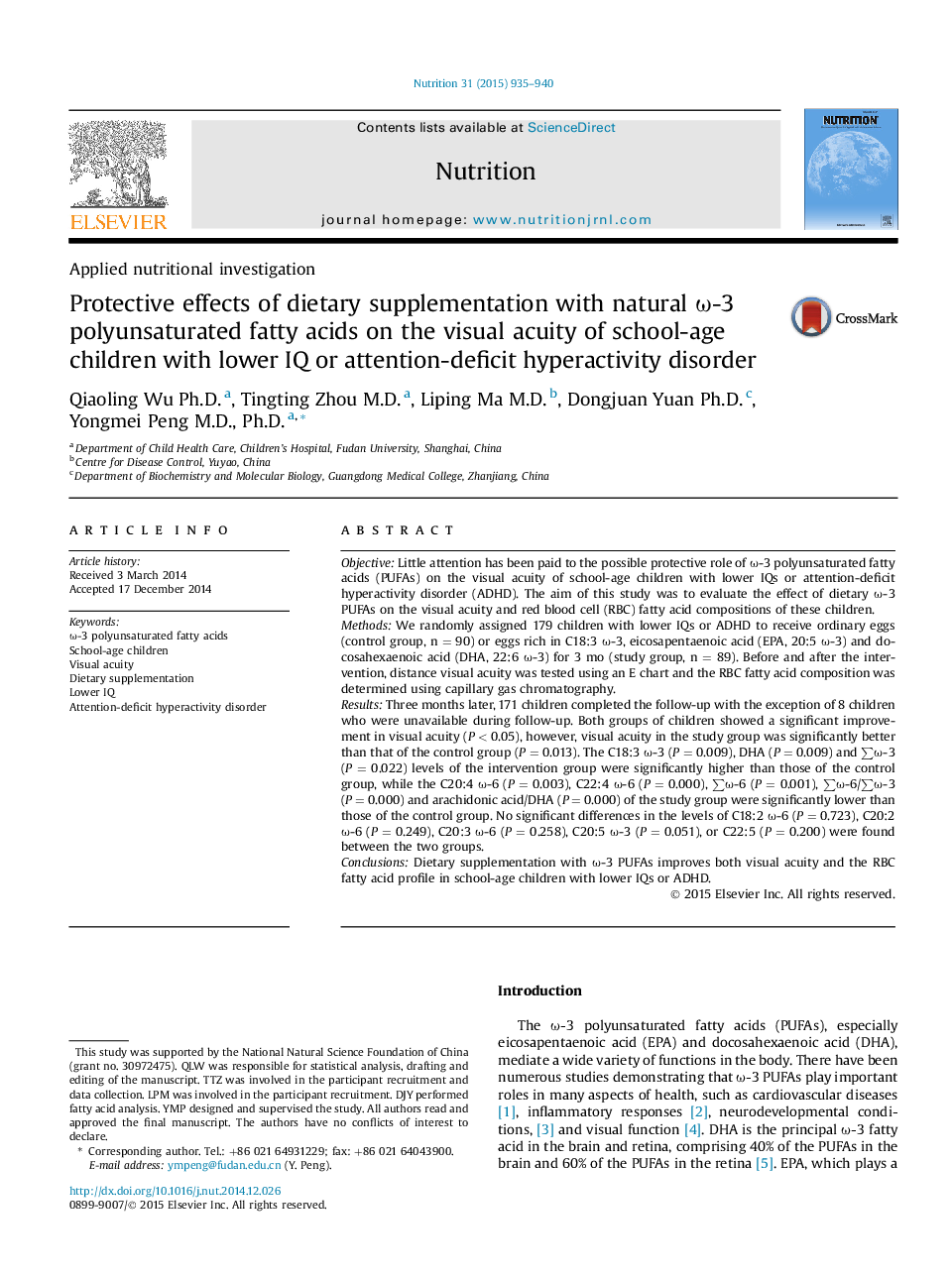| کد مقاله | کد نشریه | سال انتشار | مقاله انگلیسی | نسخه تمام متن |
|---|---|---|---|---|
| 6089287 | 1589668 | 2015 | 6 صفحه PDF | دانلود رایگان |

- Ï-3 Polyunsaturated fatty acids (PUFAs) and visual acuity of school-age children were addressed.
- Two types of natural eggs with different contents of Ï-3 PUFAs were used.
- Dietary Ï-3 PUFAs improve visual acuity of school-age children.
- Dietary Ï-3 PUFAs improve erythrocyte fatty acid profile of school-age children.
ObjectiveLittle attention has been paid to the possible protective role of Ï-3 polyunsaturated fatty acids (PUFAs) on the visual acuity of school-age children with lower IQs or attention-deficit hyperactivity disorder (ADHD). The aim of this study was to evaluate the effect of dietary Ï-3 PUFAs on the visual acuity and red blood cell (RBC) fatty acid compositions of these children.MethodsWe randomly assigned 179 children with lower IQs or ADHD to receive ordinary eggs (control group, n = 90) or eggs rich in C18:3 Ï-3, eicosapentaenoic acid (EPA, 20:5 Ï-3) and docosahexaenoic acid (DHA, 22:6 Ï-3) for 3 mo (study group, n = 89). Before and after the intervention, distance visual acuity was tested using an E chart and the RBC fatty acid composition was determined using capillary gas chromatography.ResultsThree months later, 171 children completed the follow-up with the exception of 8 children who were unavailable during follow-up. Both groups of children showed a significant improvement in visual acuity (P < 0.05), however, visual acuity in the study group was significantly better than that of the control group (P = 0.013). The C18:3 Ï-3 (P = 0.009), DHA (P = 0.009) and âÏ-3 (P = 0.022) levels of the intervention group were significantly higher than those of the control group, while the C20:4 Ï-6 (P = 0.003), C22:4 Ï-6 (P = 0.000), âÏ-6 (P = 0.001), âÏ-6/âÏ-3 (P = 0.000) and arachidonic acid/DHA (P = 0.000) of the study group were significantly lower than those of the control group. No significant differences in the levels of C18:2 Ï-6 (P = 0.723), C20:2 Ï-6 (P = 0.249), C20:3 Ï-6 (P = 0.258), C20:5 Ï-3 (P = 0.051), or C22:5 (P = 0.200) were found between the two groups.ConclusionsDietary supplementation with Ï-3 PUFAs improves both visual acuity and the RBC fatty acid profile in school-age children with lower IQs or ADHD.
Journal: Nutrition - Volume 31, Issues 7â8, JulyâAugust 2015, Pages 935-940